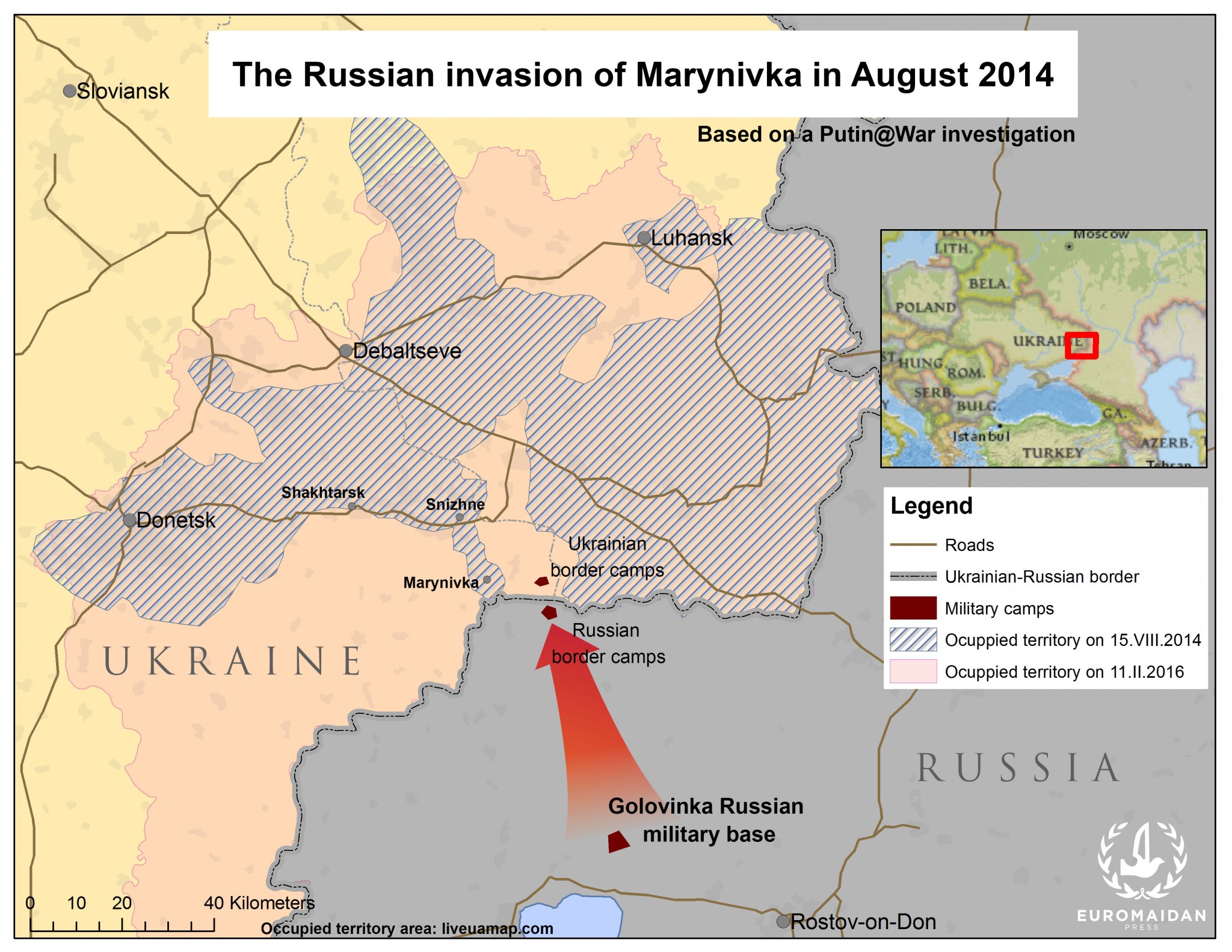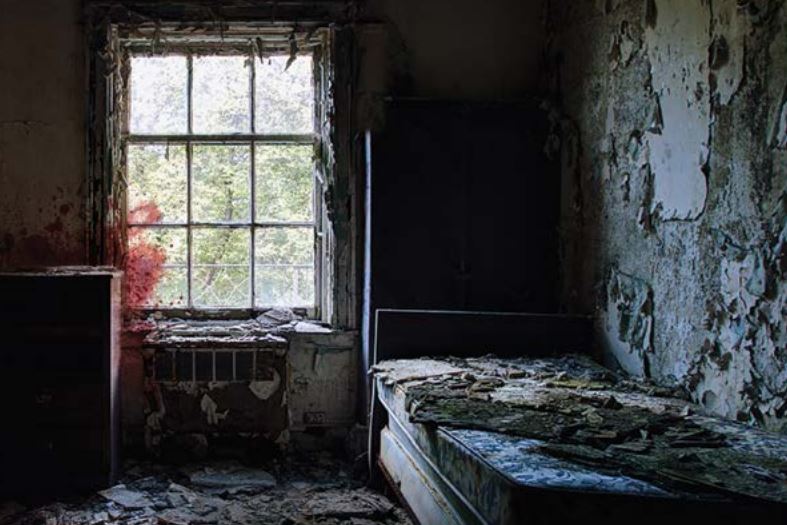
A strategic town on the way to Donetsk
The incident occurred here between 1 and 15 August 2014. However, the area around Marynivka was a blind spot on Google Maps at the time as the latest satellite map dated from August 2013. Investigations only became possible after a new map appeared on 22 February 2015. Despite the lengthy gap between the incident and the new map, evidence of the Russian invasion is still visible. Before war started in early 2014, the length of the Ukrainian-Russian border was 2,295 km (1426 miles), of which 1,974 km were on land and 321 km at sea. In 2014, Ukraine tried to close the porous border with Russia by positioning major army camps along it, with Marynivka being a communication node for many other units. Therefore, Russia tried to cut Marynivka off in an attempt to isolate other units.“This object is strategically important; by taking it the “militia” cut off a large group of Ukrainian troops. Also, this location is important for the control of the Ukrainian-Russian border,” pro-Russian media reported when Russian forces eventually took the area.It is also worth mentioning that Marynivka opened the shortest way from Russia to the towns of Snizhne, Shakhtarsk and then on to the city of Donetsk.
Ukrainian camps shelled across the border from Russia
On the maps published by Putin@war, Ukrainian camps are identified. Some tracks can only be observed on the 2015 maps, not on those from 2013. The maps indicate roads which are visible on both, multiple tracks which were the arteries running along the border leading to and supplying all the other Ukrainian camps; the main route from the upper camp to the East and the intensiveness of patrolling the area. The maps reveal that the Ukrainian camps were intensively shelled by artillery. The craters can help to determine the direction of impact. One can then find an artillery position that may point in the same direction. The investigation found 4 directions from which Ukrainian camps were attacked.Russian camps and signs of Russian presence
Read also: Trojan convoys: Putin’s hidden invasion
An interesting detail is that during that time a convoy with more than a hundred vehicles was spotted on the road to Novoshakhtinsk. The investigation cannot determine whether this convoy did indeed cross the border at the nearest Dolzhanskyi border crossing, but knowing about the Marynivka invasion that involved hundreds of vehicles, the convoy might have been heading there. According to Google, it is exactly on the shortest route from the Rostov army camp to the Marynivka invasion camp.







